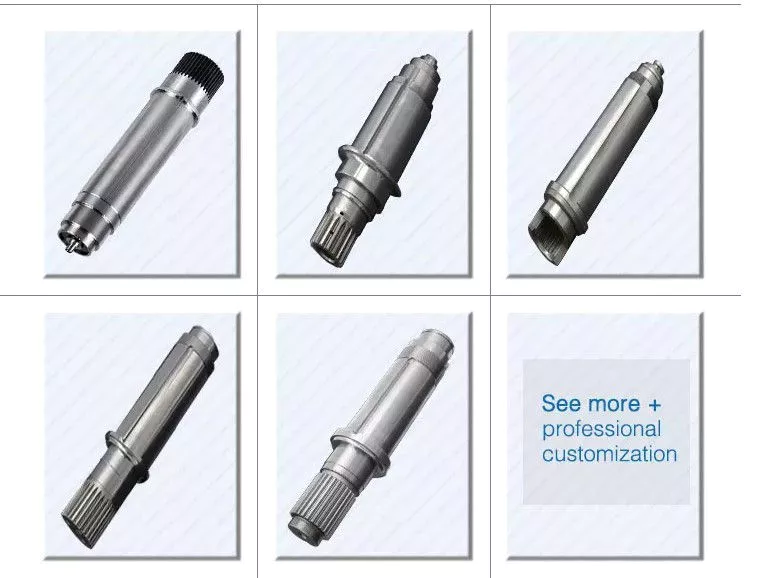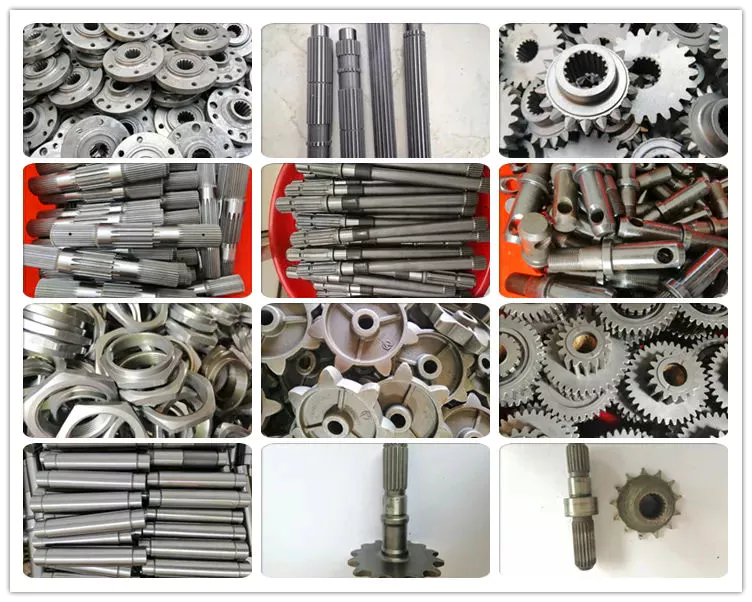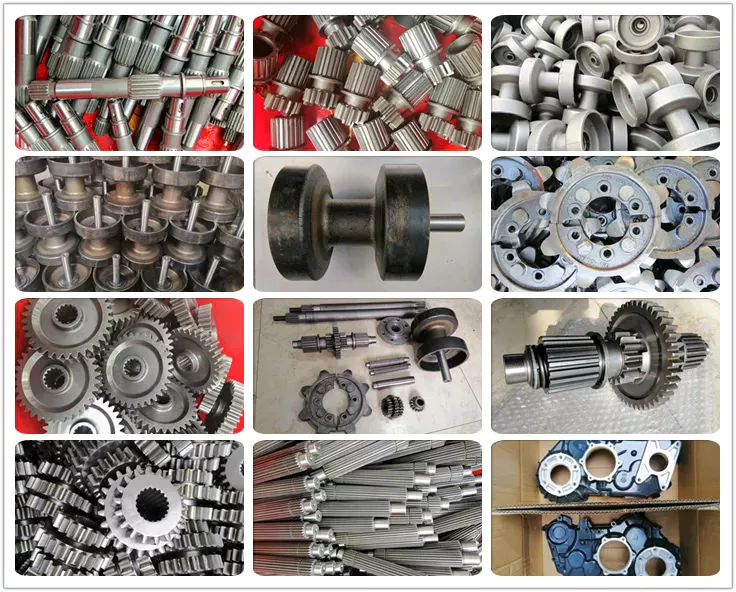Product Description
LS Screw Conveyor
Introduction:
Screw Conveyor is the essential equipment of dry mortar mixer plant ,concrete mixing plant,which plays important role in the product line.It is suitable for all industries such as building material, chemical industry, power industry, metallurgy, coal industry and CZPT industry and for horizontal or tilted transportation for powdery, granular and small lump materials such as coal, dust, residue, cement and CZPT which their temperature is less than 200ºC. Screw conveyor is not suitable for materials with perishable, big viscosity and easily caked.
Working Principles :
The motor drives the helical blades by driving reducer in a close steel pipe, to deliver powder and CZPT (cement, fly ash etc) continuously and discontinuously.
Main Components of Screw Conveyor:
Motor, reducer, outer pipe, screw mandrel, middle-hoist bearing, tail bearing, universal joint, charging door flange.Which has the characters of compact design, low noise, good seal and convenient for layout.
Main Technical Specification:
1.Type: Named by the diameter of outer pipe. Larger in diameter, larger in delivery volume.
2.Delivery length (L): Distance between charging door and discharging door, namely the itinerary that materials go through in the conveyor pipe.
3.Delivery angle: Angle between screw conveyor and horizontal plane. The bigger the angle, the fewer volume the conveyor can delivery at the same condition.
4.Delivery volume: delivery capacity per hour, T/H.
5.Connection of charging: Connected by universal ball joint, convenient for adjusting when installation.
| Model | Screw diameter | Screw pitch | n—rotation speed(r/min), allowable deviation<10% | |||||||
| Q—volume(m3/h), fill-factor=0.33 | ||||||||||
| (mm) | (mm) | n | Q | n | Q | n | Q | n | Q | |
| LS160 | 160 | 112 | 112 | 8 | 90 | 7 | 71 | 6 | 50 | 4 |
| LS200 | 200 | 100 | 100 | 14 | 80 | 12 | 63 | 10 | 50 | 7 |
| LS250 | 250 | 90 | 90 | 24 | 71 | 20 | 56 | 16 | 45 | 13 |
| LS315 | 315 | 80 | 80 | 34 | 63 | 26 | 50 | 21 | 40 | 16 |
| LS400 | 355 | 71 | 71 | 64 | 56 | 52 | 45 | 41 | 36 | 34 |
| LS500 | 400 | 63 | 63 | 100 | 50 | 80 | 40 | 64 | 32 | 52 |
| LS630 | 450 | 50 | 50 | 145 | 40 | 116 | 32 | 94 | 25 | 80 |
| LS800 | 500 | 40 | 40 | 208 | 32 | 165 | 25 | 130 | 20 | 110 |
| LS1000 | 600 | 32 | 32 | 300 | 25 | 230 | 20 | 180 | 16 | 150 |
Features of Screw Conveyor:
A) High quality motor and gear box, with heavy duty design, large torque and low noise.
B) outside tube complete with 1 inlet, 1 outlet, end flange, ball joint , inspection window.
C) standard fitting parts, middle bearing, end bearing, spline shaft coupling.
D) Lifting eyes on each tube section, convenient for transport and installation.
E) small diameter, great efficiency, high throughout rates.
Photos of Screw Conveyor:
Why Choose Us?
1. Quality Price
We have been in this field over 20 years, so we have great advantage in good quality with competitive price.
2. Test
Top production test equipment and production equipment to guarantee the product quality.Our product can totally meet SGS, BV, CIQ etc. test.
3.Packing
Wooden Box Package with fit for sea ship .
4. Transport
The products can be transported by big shipping company, we buy Insurance Policy for every client.
5. Service
We offer specialized logistic service including export declaration,customs clearance and every detail during shipment. This makes us CZPT to offer you one-stop service from the order to the products transported to your hand.
FAQ of Screw Conveyor
1: What is the condition to provide a correct offer ?
Kindly provide the filling material size ,density and capacity ,then we will offer it accordingly.
2: What is your acceptable payment term?
L/C,T/T,Western Union.
3: How about the validity of the offer?
Usually our offer is valid for 1 month. However, validity might vary between different products.
4: What documents you provide?
Usually, we provide Commercial Invoice, Packing List, Bill of lading, and Origin Certificate. Please let us know if you need additional documents.
5: What is loading port?
Usually loading port is HangZhou port, besides, ZheJiang Port, HangZhou Port is totally no problem for us, and also we can ship from other ports as your requirement .
Contacts:
The Different Types of Splines in a Splined Shaft
A splined shaft is a machine component with internal and external splines. The splines are formed in 4 different ways: Involute, Parallel, Serrated, and Ball. You can learn more about each type of spline in this article. When choosing a splined shaft, be sure to choose the right 1 for your application. Read on to learn about the different types of splines and how they affect the shaft’s performance.
Involute splines
Involute splines in a splined shaft are used to secure and extend mechanical assemblies. They are smooth, inwardly curving grooves that resist separation during operation. A shaft with involute splines is often longer than the shaft itself. This feature allows for more axial movement. This is beneficial for many applications, especially in a gearbox.
The involute spline is a shaped spline, similar to a parallel spline. It is angled and consists of teeth that create a spiral pattern that enables linear and rotatory motion. It is distinguished from other splines by the serrations on its flanks. It also has a flat top. It is a good option for couplers and other applications where angular movement is necessary.
Involute splines are also called involute teeth because of their shape. They are flat on the top and curved on the sides. These teeth can be either internal or external. As a result, involute splines provide greater surface contact, which helps reduce stress and fatigue. Regardless of the shape, involute splines are generally easy to machine and fit.
Involute splines are a type of splines that are used in splined shafts. These splines have different names, depending on their diameters. An example set of designations is for a 32-tooth male spline, a 2,500-tooth module, and a 30 degree pressure angle. An example of a female spline, a fillet root spline, is used to describe the diameter of the splined shaft.
The effective tooth thickness of splines is dependent on the number of keyways and the type of spline. Involute splines in splined shafts should be designed to engage 25 to 50 percent of the spline teeth during the coupling. Involute splines should be able to withstand the load without cracking.
Parallel splines
Parallel splines are formed on a splined shaft by putting 1 or more teeth into another. The male spline is positioned at the center of the female spline. The teeth of the male spline are also parallel to the shaft axis, but a common misalignment causes the splines to roll and tilt. This is common in many industrial applications, and there are a number of ways to improve the performance of splines.
Typically, parallel splines are used to reduce friction in a rotating part. The splines on a splined shaft are narrower on the end face than the interior, which makes them more prone to wear. This type of spline is used in a variety of industries, such as machinery, and it also allows for greater efficiency when transmitting torque.
Involute splines on a splined shaft are the most common. They have equally spaced teeth, and are therefore less likely to crack due to fatigue. They also tend to be easy to cut and fit. However, they are not the best type of spline. It is important to understand the difference between parallel and involute splines before deciding on which spline to use.
The difference between splined and involute splines is the size of the grooves. Involute splines are generally larger than parallel splines. These types of splines provide more torque to the gear teeth and reduce stress during operation. They are also more durable and have a longer life span. And because they are used on farm machinery, they are essential in this type of application.
Serrated splines
A Serrated Splined Shaft has several advantages. This type of shaft is highly adjustable. Its large number of teeth allows large torques, and its shorter tooth width allows for greater adjustment. These features make this type of shaft an ideal choice for applications where accuracy is critical. Listed below are some of the benefits of this type of shaft. These benefits are just a few of the advantages. Learn more about this type of shaft.
The process of hobbing is inexpensive and highly accurate. It is useful for external spline shafts, but is not suitable for internal splines. This type of process forms synchronized shapes on the shaft, reducing the manufacturing cycle and stabilizing the relative phase between spline and thread. It uses a grinding wheel to shape the shaft. CZPT Manufacturing has a large inventory of Serrated Splined Shafts.
The teeth of a Serrated Splined Shaft are designed to engage with the hub over the entire circumference of the shaft. The teeth of the shaft are spaced uniformly around the spline, creating a multiple-tooth point of contact over the entire length of the shaft. The results of these analyses are usually satisfactory. But there are some limitations. To begin with, the splines of the Serrated Splined Shaft should be chosen carefully. If the application requires large-scale analysis, it may be necessary to modify the design.
The splines of the Serrated Splined Shaft are also used for other purposes. They can be used to transmit torque to another device. They also act as an anti-rotational device and function as a linear guide. Both the design and the type of splines determine the function of the Splined Shaft. In the automobile industry, they are used in vehicles, aerospace, earth-moving machinery, and many other industries.
Ball splines
The invention relates to a ball-spinned shaft. The shaft comprises a plurality of balls that are arranged in a series and are operatively coupled to a load path section. The balls are capable of rolling endlessly along the path. This invention also relates to a ball bearing. Here, a ball bearing is 1 of the many types of gears. The following discussion describes the features of a ball bearing.
A ball-splined shaft assembly comprises a shaft with at least 1 ball-spline groove and a plurality of circumferential step grooves. The shaft is held in a first holding means that extends longitudinally and is rotatably held by a second holding means. Both the shaft and the first holding means are driven relative to 1 another by a first driving means. It is possible to manufacture a ball-splined shaft in a variety of ways.
A ball-splined shaft features a nut with recirculating balls. The ball-splined nut rides in these grooves to provide linear motion while preventing rotation. A splined shaft with a nut that has recirculating balls can also provide rotary motion. A ball splined shaft also has higher load capacities than a ball bushing. For these reasons, ball splines are an excellent choice for many applications.
In this invention, a pair of ball-spinned shafts are housed in a box under a carrier device 40. Each of the 2 shafts extends along a longitudinal line of arm 50. One end of each shaft is supported rotatably by a slide block 56. The slide block also has a support arm 58 that supports the center arm 50 in a cantilever fashion.
Sector no-go gage
A no-go gauge is a tool that checks the splined shaft for oversize. It is an effective way to determine the oversize condition of a splined shaft without removing the shaft. It measures external splines and serrations. The no-go gage is available in sizes ranging from 19mm to 130mm with a 25mm profile length.
The sector no-go gage has 2 groups of diametrally opposed teeth. The space between them is manufactured to a maximum space width and the tooth thickness must be within a predetermined tolerance. This gage would be out of tolerance if the splines were measured with a pin. The dimensions of this splined shaft can be found in the respective ANSI or DIN standards.
The go-no-go gage is useful for final inspection of thread pitch diameter. It is also useful for splined shafts and threaded nuts. The thread of a screw must match the contour of the go-no-go gage head to avoid a no-go condition. There is no substitute for a quality machine. It is an essential tool for any splined shaft and fastener manufacturer.
The NO-GO gage can detect changes in tooth thickness. It can be calibrated under ISO17025 standards and has many advantages over a non-go gage. It also gives a visual reference of the thickness of a splined shaft. When the teeth match, the shaft is considered ready for installation. It is a critical process. In some cases, it is impossible to determine the precise length of the shaft spline.
The 45-degree pressure angle is most commonly used for axles and torque-delivering members. This pressure angle is the most economical in terms of tool life, but the splines will not roll neatly like a 30 degree angle. The 45-degree spline is more likely to fall off larger than the other two. Oftentimes, it will also have a crowned look. The 37.5 degree pressure angle is a compromise between the other 2 pressure angles. It is often used when the splined shaft material is harder than usual.




